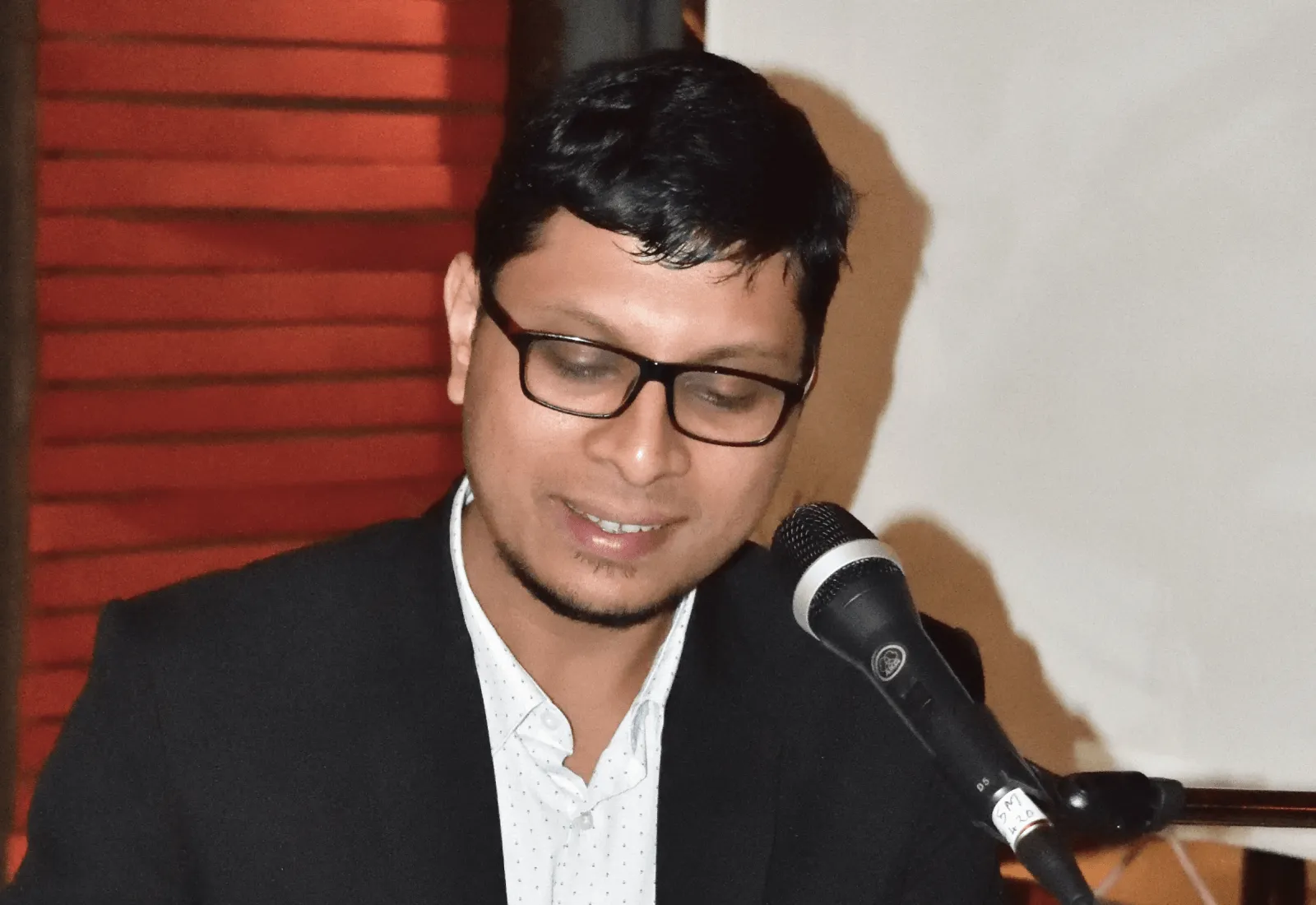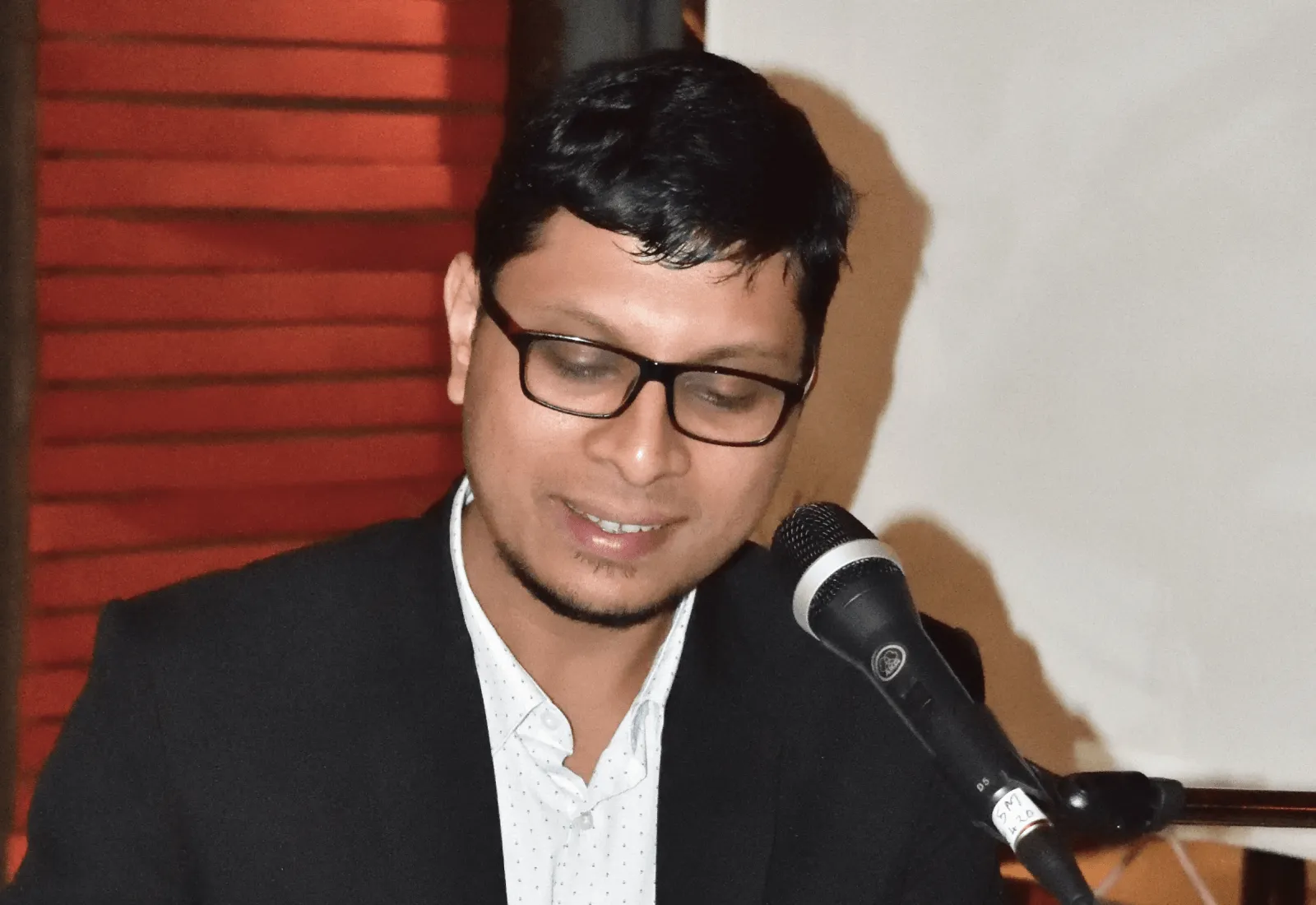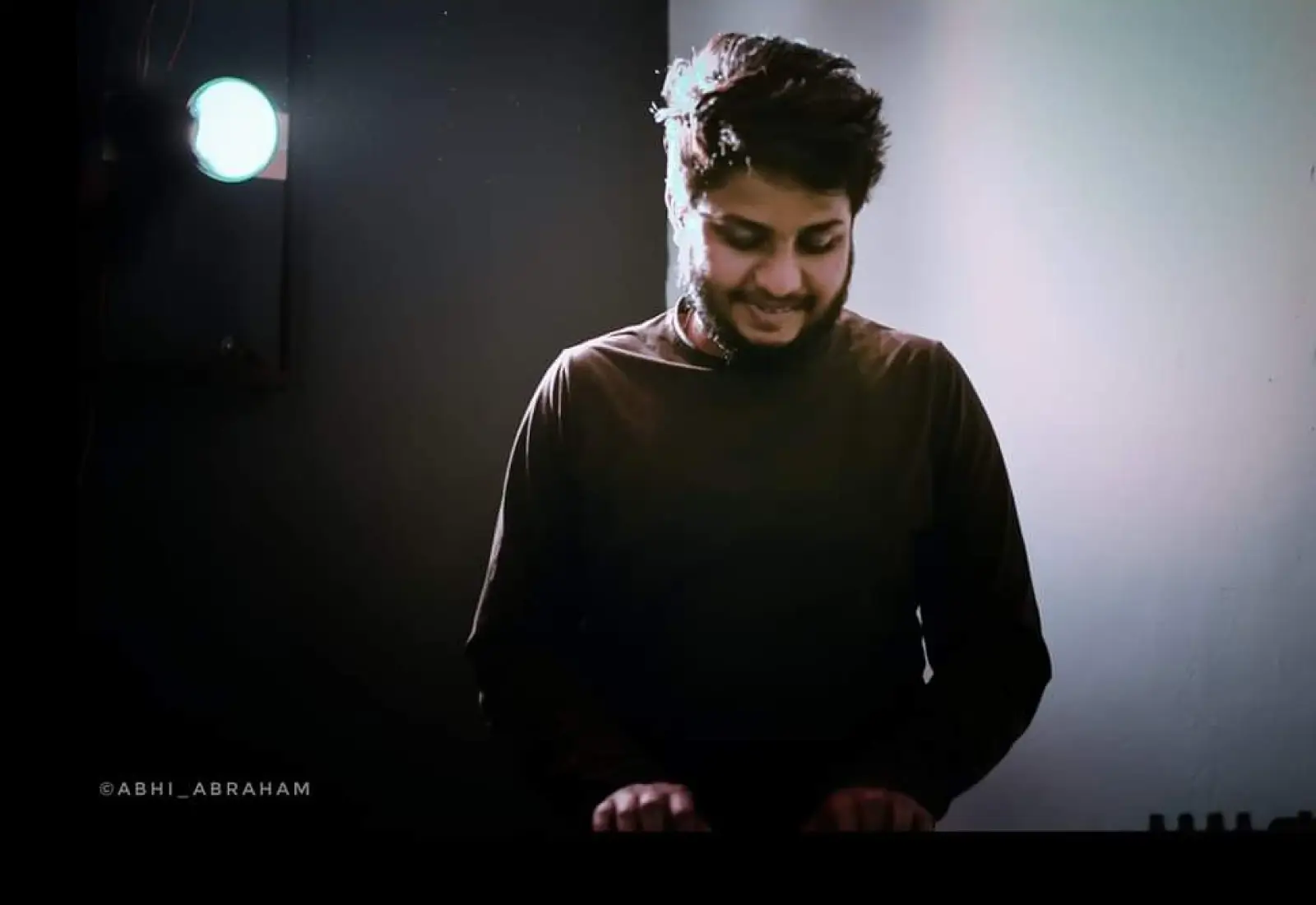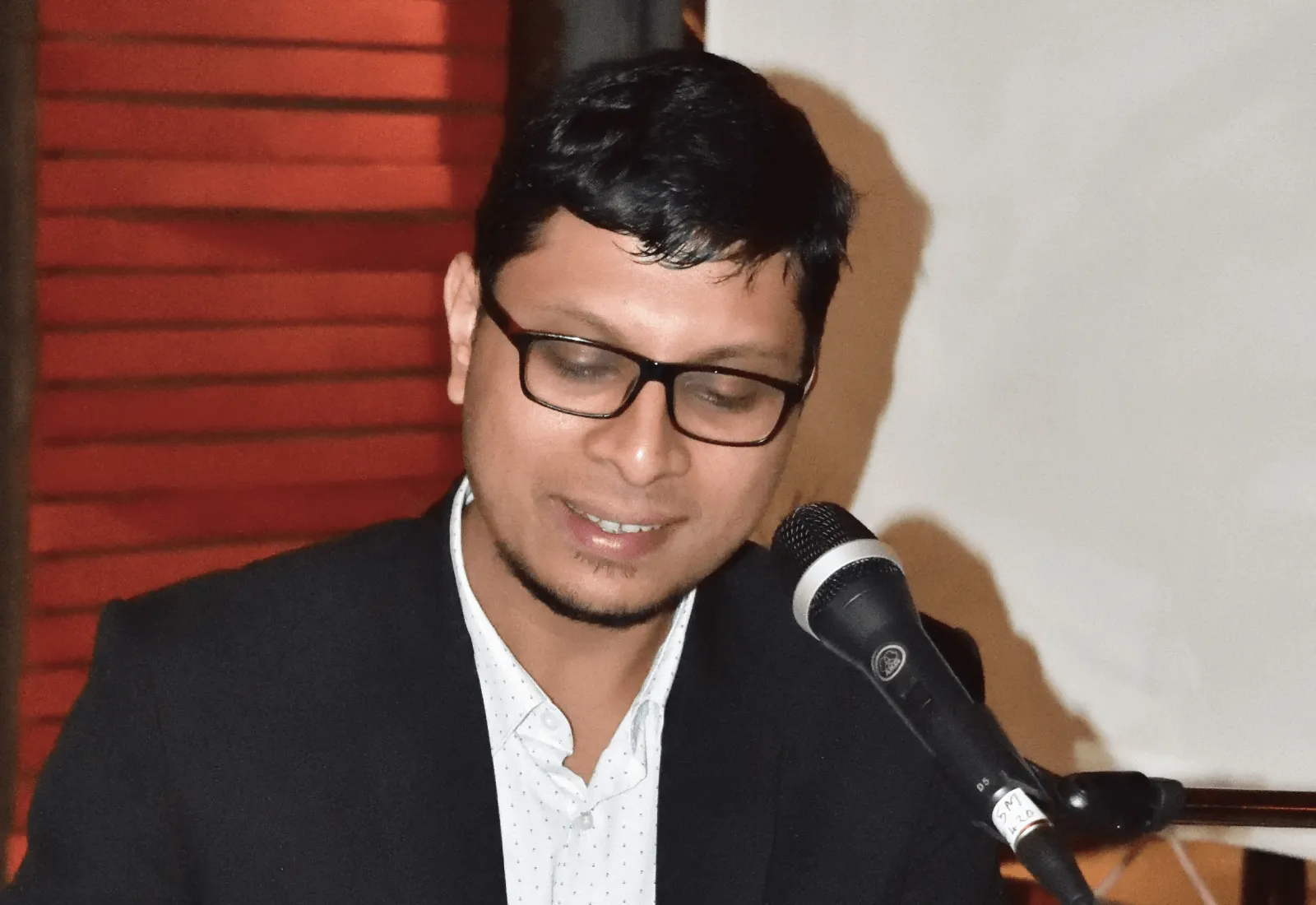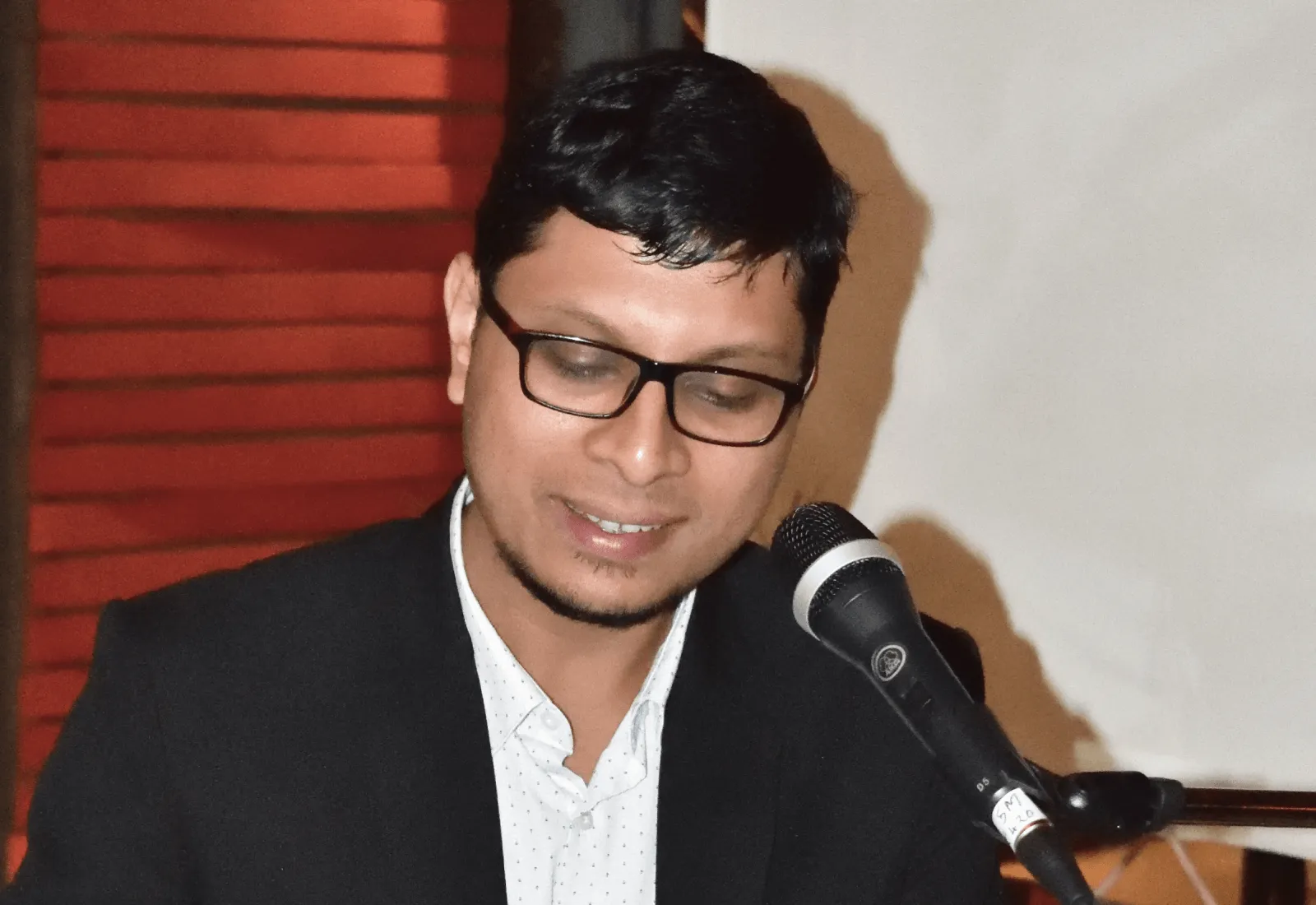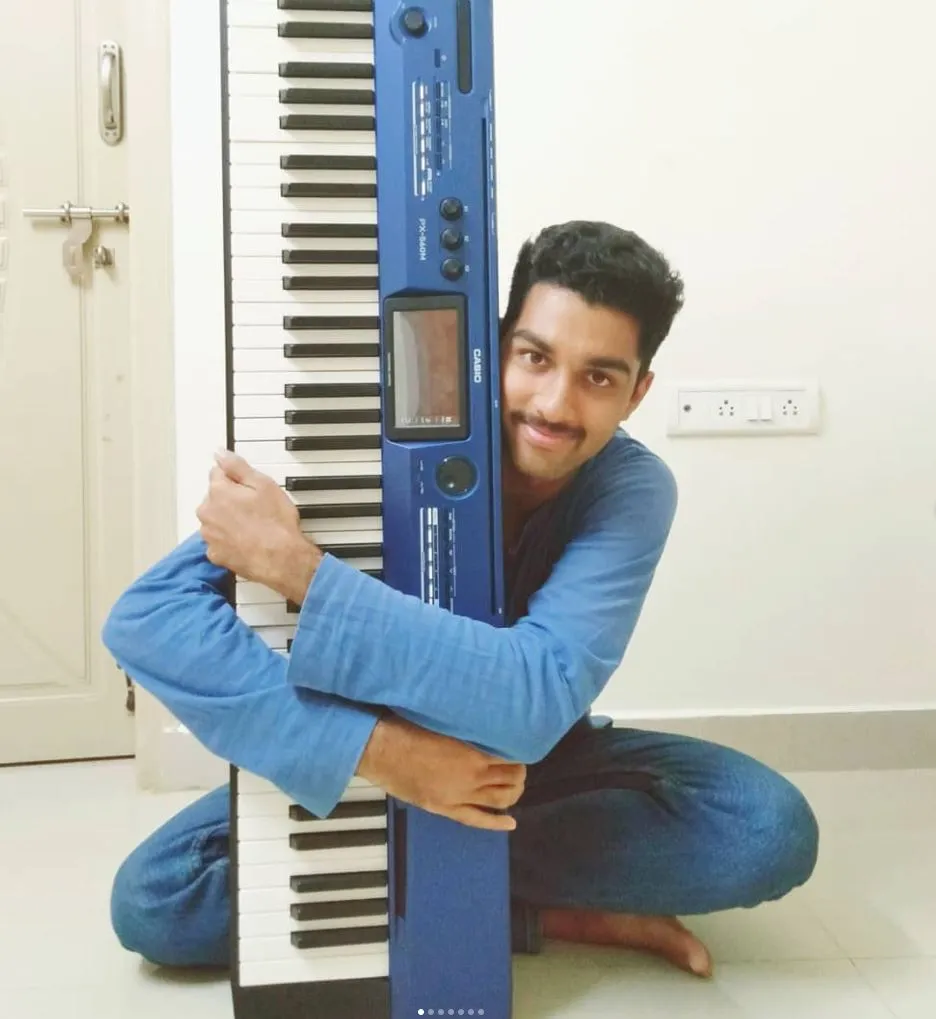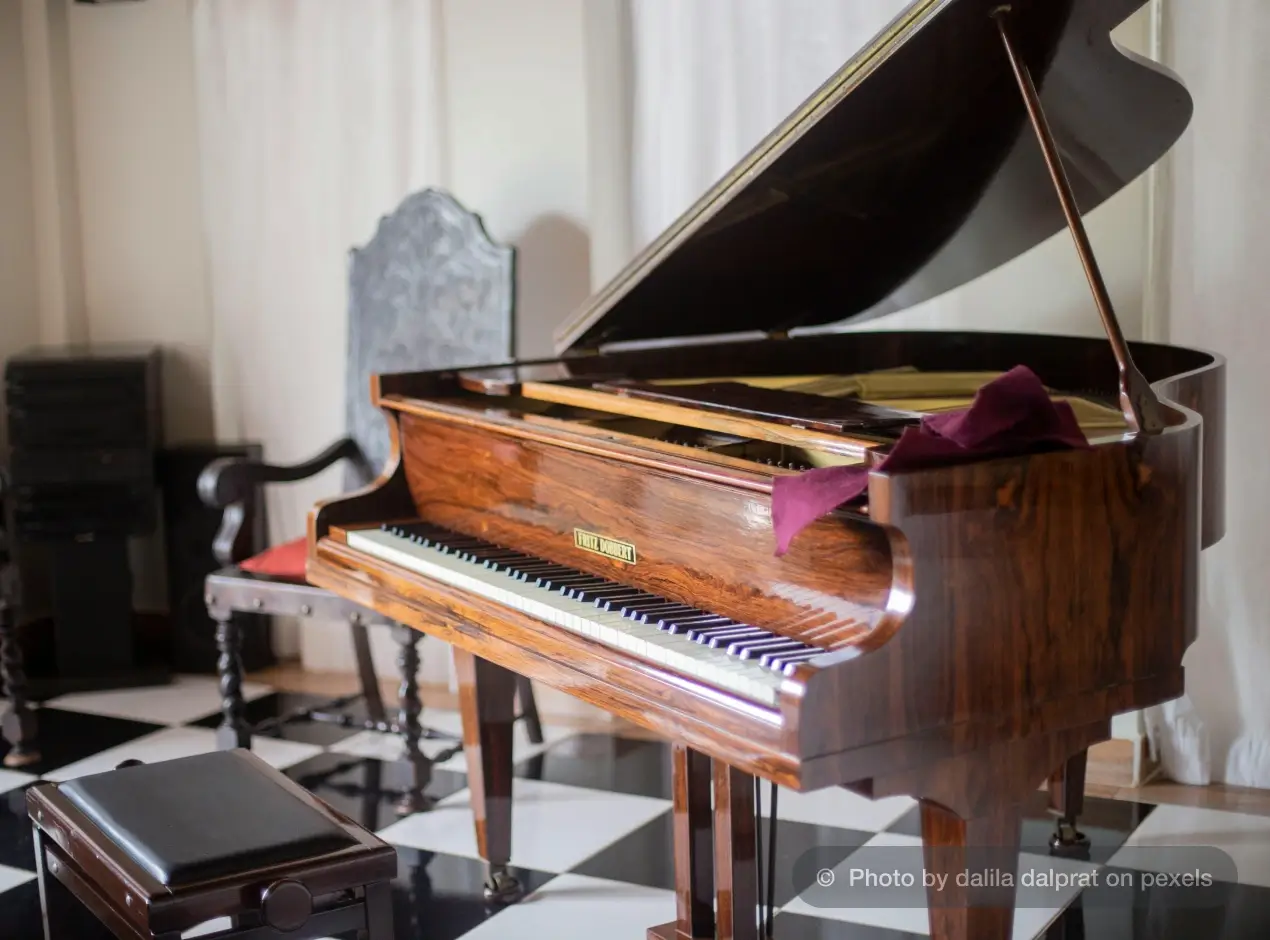Overview
In India, the harmonium is the first musical instrument that most music enthusiasts reach out to as an accompaniment to vocal music. It compliments almost every musical genre - including but not limited to - classical, semi-classical, folk, and film songs.
Harmonium is a free reed aerophone. It features a keyboard and a hand or foot-operated bellows. Each reed is tuned at a pitch that resonates with the musical notes. The bellows push the air inside. Upon pressing the keys on the keyboard, the valves open, allowing air to flow over metal reeds inside the instrument, causing them to vibrate and produce sound.
Foot-pedaled Harmonium
The foot-pedaled harmonium uses two pedals that are pressed one at a time. It allows the player to control the air supply to the instrument using their feet, leaving their hands free to play the keyboard.
It can be particularly advantageous in situations where the player needs greater control over the dynamics or when they wish to focus solely on the keyboard without the added task of manually pumping the bellows.
Foot-pedaled harmoniums were discontinued after a point of time owing to factors such as bulkiness, new emerging trends in the musical arena, and the rising popularity of the hand-pumped variant.
Hand-pumped Harmonium
The hand-pumped variant is equipped with a set of bellow to be pulled and pushed by one hand while the other hand plays the keys. It also features stops or registers that control the different sets of keys.
The player can control the dynamics and expression of the hand-pumped harmonium by adjusting the speed and force with which they operate the bellows. It allows for a wide range of musical expression, from soft and subtle to loud and dynamic.
Due to its portable, compact, and lightweight design, it is a popular choice for diverse musical settings, including religious ceremonies, folk music, and ensemble performances.
The harmonium holds cultural significance, particularly in Indian classical music and various folk traditions, where it accompanies devotional music like bhajans and kirtans.
History and Origin
The original model of the harmonium had foot paddles. It was invented in the year 1842 by Alexandre Debain of Paris.
Harmonium was brought to India by French Missionaries in the 19th Century. At that time, it was a foot-pedaled model. The priests used it to sing prayers. Slowly, it started getting picked by Indian musicians and soon became an integral part of the Indian musical realm.
Dwarkanath Ghose - a service provider of musical instruments - first created the hand-pumped harmonium. It was more suitable for Indian vocalists who sat cross-legged during their practice or recital sessions.
Mechanism of a Harmonium
Despite its simplicity, the instrument's unique and distinctive sound has contributed to its popularity in diverse musical contexts, including Western genres like jazz, blues, and rock. The harmonium's affordability and ability to produce harmonically rich tones further enhance its appeal, ensuring its enduring presence in various musical traditions worldwide.
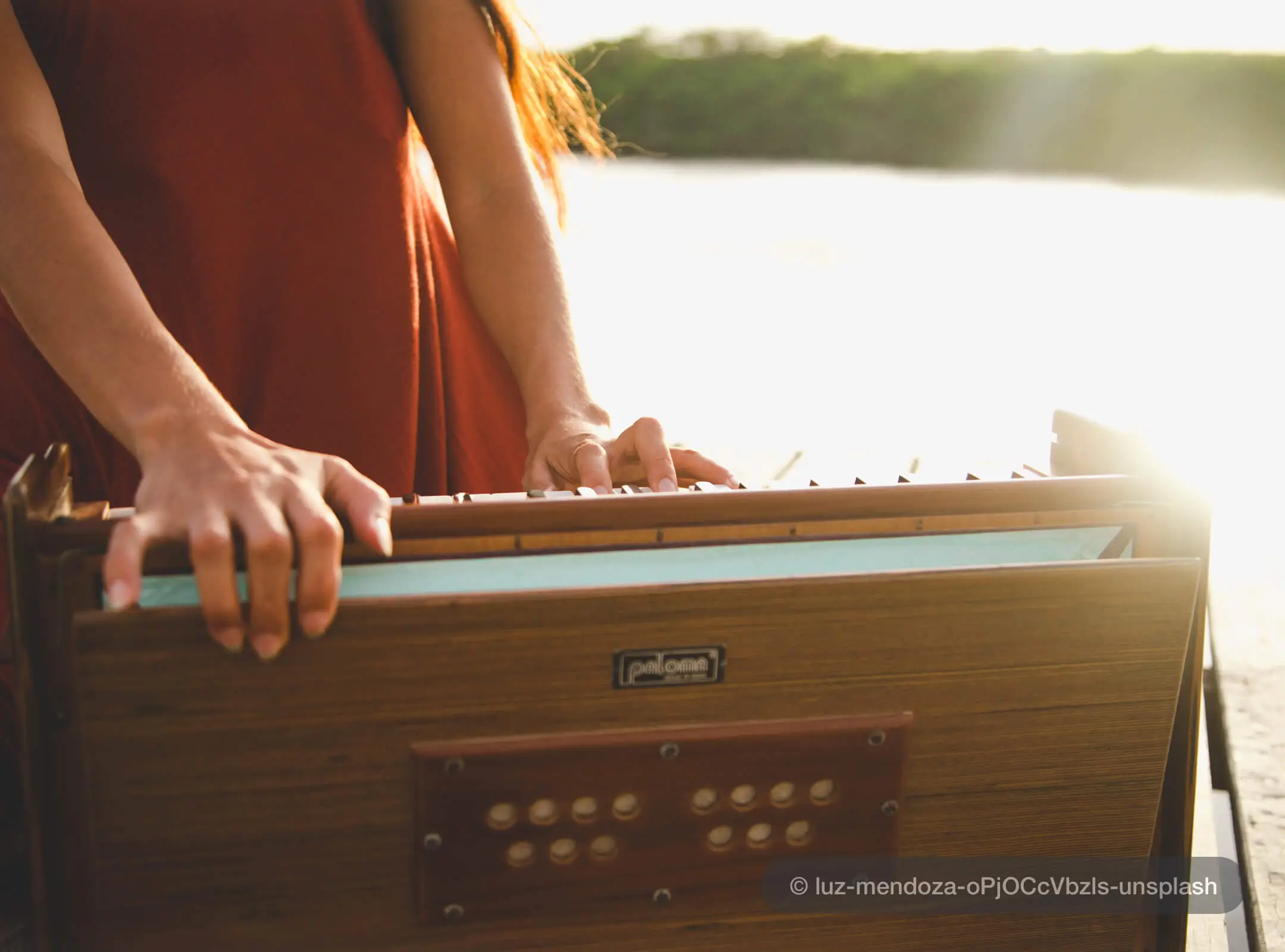
Stops
If we take a look at the instrument from the front, the first thing we notice is a few knobs (some larger than the rest) placed in a linear fashion. The larger knobs, referred to as stops, control the airflow to the internal air chambers. It's common to find repetition; for instance, a harmonium with two air chambers may feature four stops. In a standard double reed harmonium with two sets of reeds and two air chambers, you can configure it to produce sound from only one set of reeds, introducing a distinct tonal quality.
Drones
The smaller knobs are called drones. They play fixed notes when pulled out. Mostly, they play the black keys on the keyboard - C#, D#, F#, G#, A#, or some other combinations.
Reeds
The reeds of a harmonium are small, metal tongues or strips inside the instrument that produce sound when air flows over them. Harmonium reeds are made of either copper or brass.
Brass reeds have a louder and more penetrating sound, making them popular for lively singing events like kirtans and bhajans. Copper reeds have a warmer, softer sound and are often used in more expensive harmoniums designed for ghazals and classical performances.
Inside a harmonium, there are two, three, or four air chambers that match the number of reed banks. Each air chamber corresponds to a separate set of reeds. These reed banks usually have different voices or sounds. So, when you play a note, you hear two voices on a two-bank harmonium and three on a three-bank harmonium. When you use a coupler, the number of voices doubles because it automatically plays a key an octave above or below when pressed.
Reeds in harmoniums have three different voicings across three octaves: bass (B), male (M), and female (F). Bass is the lowest, the male is an octave higher, and the female is another octave higher. A harmonium with two reeds is usually voiced B/M or M/F. A harmonium with three reeds can be voiced B/M/M, B/M/F, or M/M/F. Different voicings create harmoniums with different sounds and how long the sound lasts. Bass reeds need more air, so a B/M/F instrument has less lasting sound than an M/M/F instrument, but it's louder.
Bellow
The bellows play a crucial role in the harmonium's functioning by providing the necessary air pressure for the reeds to generate sound when you play the keys.
The bellows of a harmonium are like its lungs. They are the flexible, usually rectangular, pleated chambers located at the back of the instrument. When you press and release the keys, the bellows expand and contract, creating airflow into the reeds. This airflow is essential for making sound in a harmonium.
The bellows work in coordination with the keys and the reeds inside the instrument. When you press a key, it opens a valve, allowing air to pass through the reeds. The reeds vibrate, producing sound. The bellows supply the necessary air pressure to make this happen. As you play more keys, the bellows continue to pump air, ensuring a continuous and steady flow for music production.
Octave Coupler
The octave coupler is a mechanism that helps to duplicate the notes one octave higher or/and lower, depending on the design of the harmonium. Without the octave couple, the note will sound in its natural pitch.
The octave coupler is used to create a more expansive and resonant sound by adding additional notes in a different octave. The octave coupler contributes to the harmonic richness of the harmonium's sound, making it suitable for various musical styles and settings.
Types of Harmoniums
There are various types of harmoniums, each with its own characteristics and features. The main types of harmoniums include:
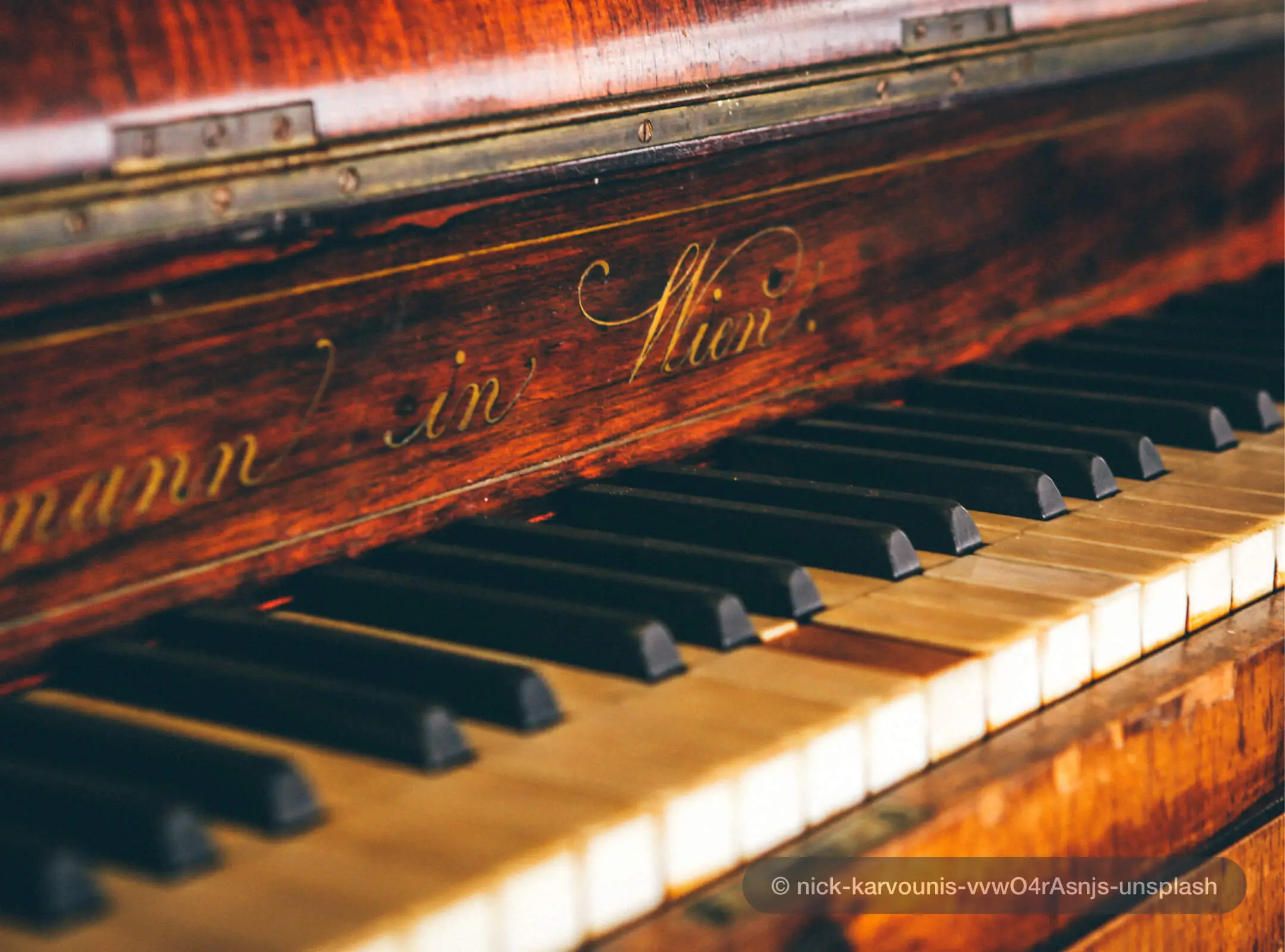
Foot-Pedaled Harmoniums
The original model of harmoniums that was created in Europe and brought to India before the hand-pumped harmoniums came into being. These harmoniums use foot pedals for operating the bellows and allow the hands to focus solely on playing the keyboard.
Hand-Pumped Harmoniums
These are the traditional Indian harmoniums that are hand-bellowed to create sound.
Scale Changer Harmoniums
In traditional harmoniums, there are separate keys designated for different scales. The musician needs to memorize the set of keys for every scale and change their fingering if they need to change the pitch.
The scale changer mechanism allows the player to change the pitch or key of the instrument without altering the fingering. These are particularly useful for musicians playing in different keys.
Double Reed Harmoniums
These harmoniums are equipped with two sets of reeds, usually tuned at different octaves, to create a richer and more resonant sound.
Double reed harmoniums are mostly manufactured in Delhi. The Delhi makers mostly use softwoods.
Triple and Quadruple Reed Harmoniums
These harmoniums have three and four sets of reeds and offer even greater versatility in terms of tonal variety and expression.
Such harmoniums are mostly manufactured in Kolkata. They are made of hardwoods such as teak, feature scale-changing facilities, and have the stops and drones properly placed and aligned with the reeds.
All these factors together ensure a richer and fuller sound, and also ease of playing for the musicians - making these variants more expensive than the double reed ones.
Renowned Harmonium Players
Wynne Paris
A music producer who specializes in Yoga music and Kirlan. He also plays Western music genres such as Jazz, Gospel Music, Blues, and Rock Music. He sings both in English and Sanskrit and plays Indian instruments - Sarod and Harmonium.
Jyoti Goho
An acclaimed harmonium player who has accompanied Bharat Ratna Bhimsen Joshi and several other luminaries of Indian classical music at prestigious stages in India and around the world.
Mehmood Dhaulpuri
One of the leading and celebrated harmonium players from India, Mehmood Dhaulpuri was an accompanist with vocalists of great stature - including - Parveen Sultana, Pandit Bhimsen Joshi, and Pandit Jasraj among others.
Suyog Kundalkar
A recipient of Ustad Bismillah Khan Puraskar & Gaansaraswati Sangeetkar Puraskar. Kundalkar is a B High artist of the All India Radio and Doordarshan.
Palash Chandra Biswas
A celebrated singer, graded artist of All India Radio, and recipient of the Young Artist Award in the field of Ghazal.
Govindrao Patwardhan
A renowned harmonium and organ player who has accompanied several musical maestros such as Pandit Ram Marathe, Pandit Kumar Gandharv, and Pandit Suresh Haldankar.
Santosh Ghante
A renowned harmonium player, soloist, accompanist, and composer, Santosh Ghante has learned under the tutelage of the Late Pandit Appa Jalgaonkar. He has taken the Harmonium from being an accompanying instrument to being considered a solo instrument. He is also trying to popularize several folk genres and neglected forms of music.
Suvendu Banerjee
Suvendu is an exponent of Gaya Gharana - a school of music that is known to be the progenitor of solo harmonium playing, a B-high Grade artist of All India Radio, and an impaneled artist of ICCR, Govt. of India.
Purshottam Walawalkar
A celebrated harmonium player who popularized harmonium all over India. He has accompanied Pandit Bhimsen Joshi and Vidhushi Kishori Amonkar among others.


